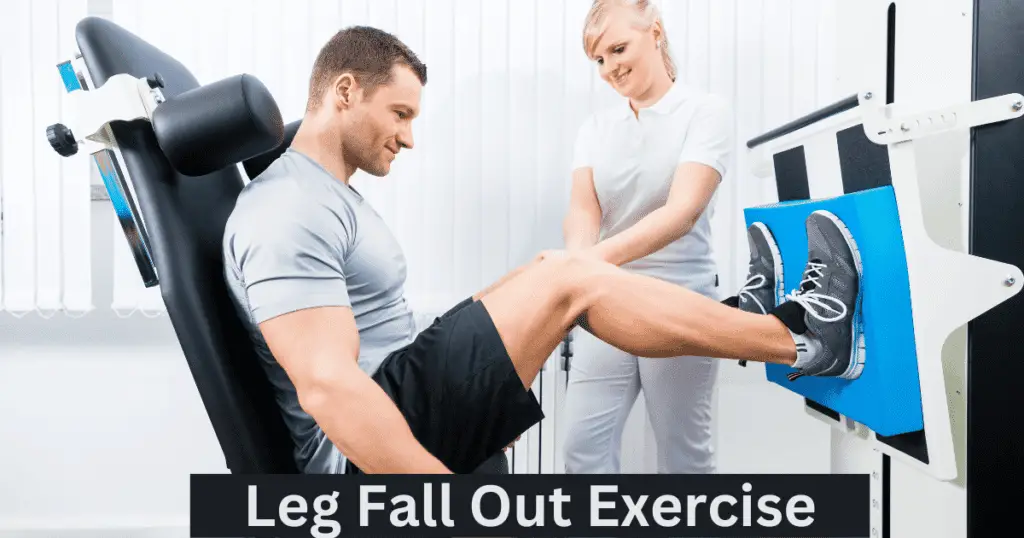In the realm of fitness, there’s a multitude of exercises that target different muscles and areas of the body. One such exercise that deserves recognition is the leg fall out exercise. This deceptively simple movement not only strengthens your core but also engages your lower body muscles, improving stability and balance. Whether you’re a fitness enthusiast or a home workout fan, incorporating the leg fall out exercise into your routine can yield significant benefits. So, let’s dive into the details and explore everything you need to know about this exercise.
1. Benefits of the Leg Fall Out Exercise
Let’s discuss the benefits of the leg fall out exercise.
Strengthening the Core Muscles
The core muscles play a crucial role in providing stability and support for the entire body. The leg fall out exercise specifically targets the deep core muscles, including the transverse abdominis and the obliques. By performing controlled movements and engaging these muscles, you can develop a stronger and more stable core, which is essential for various daily activities and other exercises.
Engaging the Lower Body Muscles
While the primary focus of the leg fall out exercise is the core, it also engages several lower body muscles. As you lower your legs to the side, the hip abductors, including the gluteus medius and minimus, come into play. These muscles, which are often neglected in traditional core exercises, are crucial for hip stability and proper lower body movement. By targeting these muscles, the leg fall out exercise helps to create a more balanced and functional lower body.
Improving Stability and Balance
The leg fall out exercise challenges your stability and balance throughout the movement. As you extend your legs to the side, your core and hip muscles must work together to control the motion and prevent excessive tilting or rotating of the hips. This not only enhances your overall stability but also improves your balance, which is beneficial for various sports and activities.
2. Proper Form and Technique
To ensure you get the most out of the leg fall out exercise while minimizing the risk of injury, it’s essential to maintain proper form and technique. Follow these step-by-step instructions:
- Lie flat on your back with your legs extended and your arms by your sides.
- Engage your core muscles by drawing your belly button in toward your spine.
- Slowly lower both legs to one side, keeping them straight and in line with your hips.
- Stop when you feel a slight stretch in your hips or when you can no longer maintain control.
- Engage your core and return your legs to the starting position.
- Repeat the movement on the opposite side.
3. Variations and Progressions
Once you’ve mastered the basic leg fall out exercise, you can explore different variations to further challenge yourself and continue progressing. Here are a few variations to consider:
- Bent Knee Fall Out: Perform the exercise with your knees bent at a 90-degree angle. This variation increases the engagement of the hip muscles and adds an extra challenge for your core.
- Resistance Band Fall Out: Place a resistance band around your thighs, just above your knees. The band adds resistance, making the exercise more challenging for your hip abductors and core.
- Weighted Fall Out: Hold a dumbbell or a medicine ball between your feet as you perform the leg fall out exercise. The added weight increases the intensity and requires greater core and hip strength to control the movement.
Remember, progress at your own pace and choose variations that suit your current fitness level and goals. Focus on maintaining proper form and gradually increase the difficulty as you become stronger and more comfortable with the exercise.
4. Safety Considerations
While the leg fall out exercise is generally safe for most individuals, it’s essential to be mindful of any existing conditions or injuries that may affect your ability to perform the exercise. Here are a few safety considerations:
- If you have lower back pain or any pre-existing hip conditions, consult with a healthcare professional or a qualified fitness instructor before attempting the exercise.
- Start with small movements and gradually increase the range of motion as you become more comfortable and confident with the exercise.
- If you experience any pain or discomfort during the exercise, stop immediately and seek guidance from a professional.
Always prioritize your safety and listen to your body. Modify or omit any exercises that cause pain or discomfort, and remember that proper form and technique are crucial for injury prevention.


5. Sample Workout Routine
Incorporating the leg fall out exercise into a well-rounded workout routine can help you reap its benefits effectively. Here’s a sample full-body workout routine that includes the leg fall out exercise:
- Warm-up: 5-10 minutes of light cardio exercises such as jogging or jumping jacks.
- Strength Training Circuit:
- Leg Fall Out Exercise: 3 sets of 10-12 repetitions on each side.
- Push-ups: 3 sets of 10-12 repetitions.
- Squats: 3 sets of 10-12 repetitions.
- Rows: 3 sets of 10-12 repetitions.
- Plank: 3 sets of 30-60 seconds.
- Cool-down: 5-10 minutes of stretching exercises, focusing on the core, hips, and lower body.
Remember to adjust the number of sets and repetitions based on your fitness level and capabilities. Rest for 60-90 seconds between each exercise and stay hydrated throughout the workout.
Conclusion
The leg fall out exercise offers a multitude of benefits for both your core and lower body. By incorporating it into your fitness routine, you can strengthen your core muscles, engage your lower body, and improve stability and balance. Remember to focus on proper form and technique, and gradually progress as you become more comfortable and stronger.
As with any exercise program, it’s important to listen to your body, make adjustments based on your capabilities, and consult a healthcare professional or a qualified fitness instructor if needed. Keep challenging yourself, stay consistent, and enjoy the journey of improving your core and lower body strength through the leg fall out exercise.
Frequently Asked Questions (FAQs)
Q1. Can the leg fall out exercise help with lower back pain?
While the leg fall out exercise engages your core and can potentially help with lower back pain, it’s recommended to consult with a healthcare professional or a qualified fitness instructor before attempting this exercise particularly if you have pre-existing conditions.
Q2. How often should I perform the leg fall out exercise?
As part of a well-rounded workout routine, consider performing this exercise 2-3 times per week. However, this may vary depending on your overall fitness routine and goals.
Q3. Can I perform the leg fall out exercise without any equipment?
Yes, the leg fall out exercise can be performed without any equipment. However, variations of the exercise, such as the weighted fall out or resistance band fall out, incorporate additional equipment for added challenge and progressions.
Q4. I’m finding the leg fall out exercise too challenging, what should I do?
As with any exercise, it’s important to progress at your own pace. If you find the exercise challenging, consider starting with smaller movements or trying the bent knee variation first. Always prioritize maintaining proper form over increasing intensity or range of motion.
Q5. I feel pain when I do the leg fall out exercise, is this normal?
If you experience pain when performing this exercise, stop immediately and seek guidance from a professional. It’s crucial to listen to your body and modify or omit any exercises that cause pain or discomfort.

